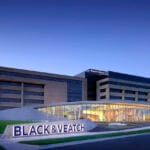Those imposing cooling towers rising above the Pennsylvania horizon belong to the Susquehanna Steam Electric Station (SSES), a nuclear power plant vital to the region’s energy grid. Located alongside the Susquehanna River, it powers over two million homes and, until recently, fueled a massive adjacent data center. This article delves into the SSES’s operations, history, and complex relationship with the evolving energy demands of our increasingly digital world. From its initial construction to its current ownership under Talen Energy, we’ll explore the story of this nuclear powerhouse and its role in Pennsylvania’s energy future.
A Powerhouse’s History
The SSES, situated in Salem Township, Luzerne County, represents a significant chapter in Pennsylvania’s energy story. Its two 540-foot cooling towers are a testament to its scale, capable of illuminating over two million homes. But how did it reach this prominent position?
The plant’s journey began long before its first unit went online in 1983, followed by Unit 2 in 1985, solidifying its role in the PJM-PPL/MAAC electricity marketplace. Initially under PPL’s operation, the plant transitioned to Talen Energy in 2015. More recently, an on-site data center operated by Talen’s subsidiary, Cumulus Data, was developed and subsequently closed after being acquired by Amazon in 2024. This intriguing development underscores the growing nexus between power generation and the data-driven digital world, raising questions about the future of such partnerships. Will we see a resurgence of on-site data centers at power plants like SSES? What does this acquisition suggest about the increasing demand for reliable, carbon-free energy to power data infrastructure?
Inside the Reactor: Boiling Water Technology
The SSES houses two of the nation’s largest boiling water reactors. Contained within a Mark II containment building, these intricate reactors are the core of the operation. They facilitate the conversion of nuclear energy into the electricity that powers our daily lives, a complex process that highlights the technological sophistication of this power station. How many nuclear power plants are on the Susquehanna River?
Balancing Power and Environmental Responsibility
The large-scale generation of electricity inevitably raises concerns about environmental impact. The SSES addresses this by submitting annual reports to the Nuclear Regulatory Commission (NRC), detailing various environmental factors, including water usage and effects on local cultural resources. However, the question remains: Is this sufficient? Can such a massive energy operation truly minimize its environmental footprint? What additional measures could contribute to a more sustainable balance between power generation and environmental preservation? What is the steam coming from a nuclear power plant?
Safety and Regulatory Oversight: The Future of SSES
Operating a nuclear facility demands unwavering attention to safety and strict adherence to regulatory guidelines. The SSES operates under the vigilant oversight of the NRC, which monitors every aspect of the plant, from licensing and regular inspections to incident reporting. This rigorous oversight underscores the station’s commitment to maintaining the highest safety standards.
But what does the future hold for the SSES in the ever-evolving energy landscape? The nuclear industry’s constant evolution requires adaptation and innovation, qualities hinted at by the plant’s past ventures, such as the data center project. What future innovations and technological advancements can we expect? Will the SSES continue to explore new partnerships and adapt to the changing energy demands of the future?
Susquehanna Steam Electric Station: At a Glance
| Feature | Description |
|---|---|
| Location | Salem Township, Luzerne County, Pennsylvania |
| Type | Nuclear Power Plant (Two Boiling Water Reactors) |
| Capacity | 2,630 Megawatts |
| Ownership | Talen Energy (90%) and Allegheny Electric (10%) |
| Market | PJM-PPL/MAAC |
| Cooling Towers | 540 feet tall |
| Regulator | Nuclear Regulatory Commission (NRC) |
The Complexities of Ownership: From PPL to Talen Energy and Amazon
The SSES ownership structure is a partnership between Talen Energy (90%) and Allegheny Electric Cooperative (10%), an arrangement established in 2015 when Talen Energy was spun off from PPL Corporation. Allegheny Electric Cooperative’s involvement dates back to 1977 during the plant’s initial construction. Talen Energy inherited its stake from PPL during the 2015 restructuring. Who owns the Susquehanna nuclear plant?
Adding another layer of complexity, Talen Energy built the Cumulus Data center on the SSES site, leveraging the plant’s power output. Amazon’s acquisition of Cumulus Data in 2024 introduces a new dynamic. This partnership may signal a growing trend of tech companies seeking nuclear energy as a reliable and sustainable resource. It raises questions about future collaborations and the potential for Susquehanna to become a model for integrated energy solutions.
The plant’s future will likely involve balancing existing operations with strategic adaptation. The current focus remains on safe and reliable electricity generation, but the Amazon partnership hints at potential diversification. Factors such as the long-term viability of nuclear power, evolving energy landscapes, and emerging technologies will shape the SSES’s future trajectory.
Ownership Structure
| Ownership Structure | Percentage |
|---|---|
| Talen Energy | 90% |
| Allegheny Electric Cooperative | 10% |
One River, One Nuclear Power Plant Complex
The Susquehanna River, traversing New York, Pennsylvania, and Maryland, hosts a single nuclear power plant complex: the Susquehanna Steam Electric Station (SSES). This complex, containing two reactors, plays a substantial role in the regional energy grid, powering approximately two million homes and businesses. Are you concerned about your Twitter reach? Uncover the truth and take control with our insightful twitter shadowban test.
Beyond the SSES: Cancelled Plans and Data Centers
The Susquehanna River’s connection to energy extends beyond the SSES. Plans for a third reactor at Bell Bend were ultimately abandoned, likely due to a combination of financial, regulatory, and possibly public sentiment factors. This cancelled project highlights the challenges associated with developing new energy infrastructure.
Adjacent to the SSES was the Cumulus Data Center, later acquired by Amazon. This connection illustrates the increasing demand of data centers for reliable energy sources like nuclear power, suggesting a new synergy between clean energy and the digital age. Could this lead to further collaborations between power plants and data centers?
Susquehanna Steam Electric Station: A Deeper Look
| Feature | Description |
|---|---|
| Name | Susquehanna Steam Electric Station (SSES) |
| Location | Salem Township, Pennsylvania, on the Susquehanna River |
| Reactors | Two boiling water reactors |
| Power Output | ~2.5 Gigawatts (enough for approximately 2 million homes and businesses) |
| Ownership | Talen Energy (90%), Allegheny Electric Cooperative (10%) |
| Proposed 3rd Reactor | Bell Bend (cancelled) |
| Adjacent Facility | Cumulus Data Center (developed by Talen and acquired by Amazon in 2024) |
Decoding the Steam: A Look at Cooling Towers
The large white plumes emanating from the SSES cooling towers are primarily water vapor, a byproduct of the cooling process, not a radioactive release. Inside the plant, controlled nuclear reactions generate immense heat used to create steam, which drives turbines connected to generators, producing electricity. After powering the turbines, the steam cools and condenses back into water. Dive into the exciting world of social gaming and elevate your experience with the innovative stackr social casino.
The Cooling Process: A Closed-Loop System
The slightly warm condensed water is then cooled further in the cooling towers, which act as giant heat exchangers. Warm water is sprayed inside, some of which evaporates, creating the water vapor plumes. The remaining water is collected and recycled, creating a closed-loop system. The volume of the plume is influenced by ambient air temperature and humidity, and the plant’s power output, rather than reactor activity.
Safety and Environmental Considerations
The SSES operates under strict regulations and employs extensive safety measures. The nuclear reaction occurs within a reinforced containment structure, entirely separate from the cooling water system, ensuring the released steam is safe. While no energy production method is completely impact-free, nuclear power plants like the SSES offer a significant advantage by not emitting greenhouse gases during operation.
The SSES and the Future of Energy
With the rising demand for reliable, carbon-free electricity, the SSES plays a vital role. Its location and infrastructure position it to meet the growing energy needs of a digital world, including the power-hungry data centers that are becoming increasingly prevalent. Future partnerships, similar to the Cumulus Data collaboration, are a possibility, though their exact form remains uncertain.
- Unlock Elemental 2 Secrets: Actionable Insights Now - April 2, 2025
- Lot’s Wife’s Name: Unveiling the Mystery of Sodom’s Fall - April 2, 2025
- Photocell Sensors: A Complete Guide for Selection and Implementation - April 2, 2025

















2 thoughts on “Susquehanna Steam Electric Station: Powering Pennsylvania in the Age of Data Centers”
Comments are closed.